Want to create a kick-ass influencer marketing strategy?
If you’re up-to-date with the marketing industry and the current state of the internet and digital marketing, you can’t help but have come across influencer marketing.
In fact, that’s probably why you’re here.
Influencer marketing has shown to be tremendously powerful in marketing because people’s bullshit detectors are more fine-tuned than ever, and rather than looking at billboards along the road, or carefully consuming the television advertisement once it goes on, we turn to our inspirations and the people we look up to on social media, so we can get tips, ideas, and advice. The individuals we are turning to on social media are influencers.
Since people look up to influencers, and carefully listens to what they have to say, the things they promote and the messages they share are tremendously more impactful and powerful, including in marketing. And really, that’s no surprise, because we tend to listen to the people we see as inspirations and that we look up to, and honestly, who looks up to a billboard?
I sure don’t.
You can debate and ponder whether influencer marketing works or not, but the fact of the matter is that the influencer marketing statistics clearly prove that influencer marketing works. But whether or not it will work for you, and be ROI-positive is completely dependent on you and how you operate.
Obviously, a hammer is a great tool, but unless you never hit the nail, it will be completely worthless.
If you take a look at the statistics, they prove that influencer marketing has the potential of helping you achieve amazing results, but how do you replicate the same results as you are seeing in statistics?
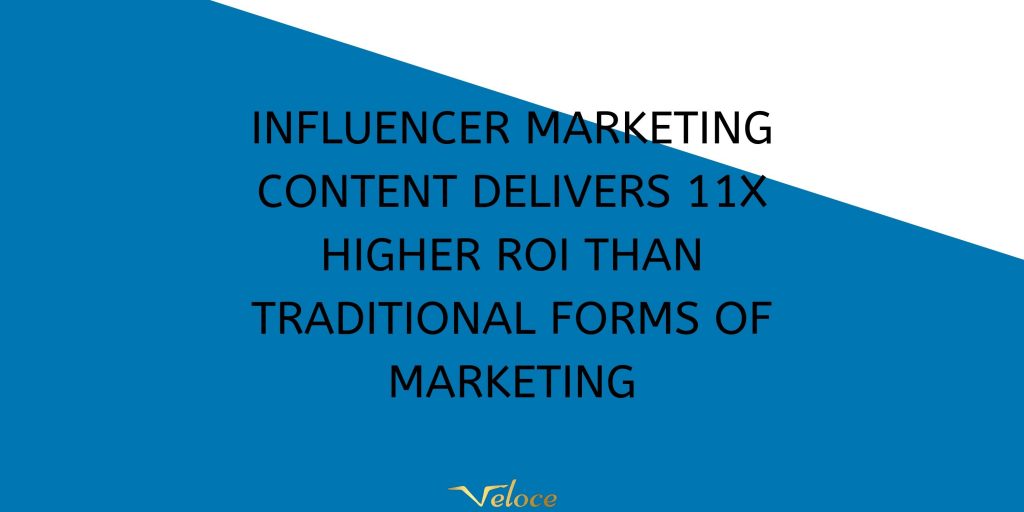
No matter what type of marketing efforts you decide to tackle, having a strategy is crucial for success.
Having an influencer marketing strategy, and a strategy, in general, is like having a roadmap.
If you don’t, however, it’s like driving through a foreign country without a map or GPS. You might end up far, far away from your initial goal and destination.
With a clear roadmap for your influencer marketing campaigns, you’ll know where to go, how to get there, the best road to take, and the most pleasant way there.
Many people get ahead of themselves and get eager to hop on the influencer marketing wagon, but influencer market is just like anything else. If you get ahead of yourself and rush it, you’ll compromise on quality, and you’ll end up running influencer campaigns that don’t perform the very best results you have the potential of achieving.
This is what developing an influencer marketing strategy helps you do.
By developing your own influencer marketing strategy, you build a solid foundation for your future influencer marketing campaigns. Doing this is just like anything that you’re building. If you don’t have a solid foundation, you’ll never be able to build a great building.
Now, you might be thinking that creating an influencer marketing strategy is only a waste of time and nothing worth pursuing.
In fact, that’s what I did too!
But oh so wrong I was…
…And you can either learn it the hard way by neglecting the influencer marketing campaign and then fail miserably, or at least miss out on incredible marketing results, or, you can do what we humans aren’t made to do, which is take the route that is a little bit harder, and in that way ensure successful influencer marketing campaigns.
Either you can take the shortcut and get cut short, and later have to deal with the downsides of not having done the work, or, you can do the work by creating your influencers marketing strategy, and then don’t have to do the work later on.

Either way, it will always come back to you.
The best part is that creating an influencer marketing strategy isn’t that hard or time-consuming!
With these steps, it will only take you a few minutes, and that will keep you set for a long time to come when working with influencer marketing.
And no matter if you choose to take the shortcut or not, It doesn’t matter too much to me, because either you’ll read this post and create your influencer marketing strategy, or, you’ll say ”screw this, this sounds like a lot of work”, but then, you’ll realize that in order to run successful influencer marketing campaigns, you cannot afford to make the shortcut of neglecting the influencer marketing strategy, which, will make you find your way back here again, reading my post which I’ve written with blood, sweat, and tears.
Just kidding, only coffee.
In this post, we’ll look at how you can create an influencer marketing strategy that helps you boost and improve your results with influencer marketing, and thus get more bang for your bucks and efforts.
Without further ado, let’s dig right in!
1. Define your audience
As with any marketing effort, influencer marketing starts with you defining your audience. Knowing your target audience well is crucial for successful campaigns because if you have no idea of who your target audience is, you’ll operate in the dark, struggling to reach the people who truly matter to your brand.
And it’s not only that defining your target audience and understanding the demographics, characteristics, where your target audience spends time, and who they look up to that is important for better targeting, but knowing your target audience is actually incredibly important when it comes to identifying influencers to market with.
As a brand, the only people who matter to you are the people within your target audience.
What does this mean?
Well, if you could choose between reaching 10K people where 5K of them are within your target audience or reach 100K people where only 2K are within your target audience, most people would probably choose the latter, because the more the better, right?
Well, if you look on the surface, then absolutely, but when you consider the fact that it won’t matter how many people you reach unless they are from your target audience, it gets quite obvious that it’s important to understand the difference between reaching people, and reaching the right people with your marketing efforts.
Defining your target audience for your influencer marketing strategy is very simple. You can start by asking these basic questions to better understand your target audience to really understand what characteristics the people you are trying to reach have. By doing this, you’ll make it easy to actually reach those people with your marketing efforts, as you’re no longer operating in the dark and aiming at a target while having your eyes closed.
Answer these questions:
- Which are their hobbies?
- What gender are they? Both?
- Where do they live?
- What job/position do they have?
Nike is a good example of a brand who knows their audience very well and therefore can create content that their audience resonates well with. Not only that, they can also work with influencers which their audience looks up to.
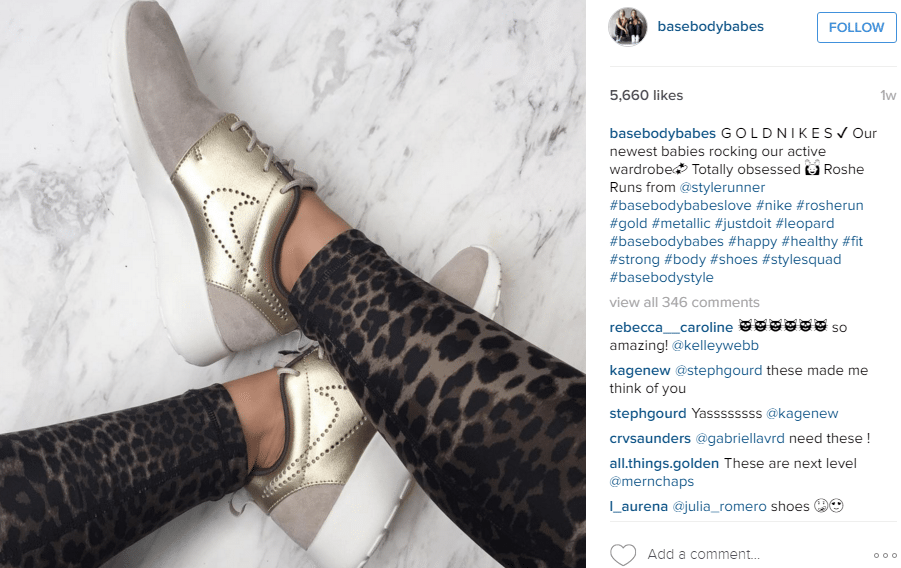
Of course, it can be hard to get answers to all of these questions unless you put some effort into running surveys, studying your website visitors, and analyzing the results of those.
But there is one way that is even more surefire than the one above.
That method means asking yourself.
To whom have you created your product?
Simple!
When you know your target audience, you’ll better understand what people impacts their buying habits.
What’s more, when trying to better understand your target audience in order to be able to run more successful influencer marketing campaigns on social media, why not dig deep on the place where you are trying to reach them – social media?
People share a ton of information about themselves on social media, including what they are doing, who their family members are, what their hobbies are, and so on. People even share pictures of what they eat.
The best part is that by taking the time to look and listening to that information, you’ll essentially be able to get to know everything about your target audience, without ever having spoken to them, or even met them. People share their whole lives on social media, so don’t miss out on the amazing opportunity to learn more about your audience and the characteristics they have.
Moreover, social listening is yet another way to learn more about your target audience on social media. With social listening, you tune in to the conversations that your target audience has on social media. These conversations can be about anything and everything, and the more you consume the messages they share, the better you’ll be able to understand your audience.
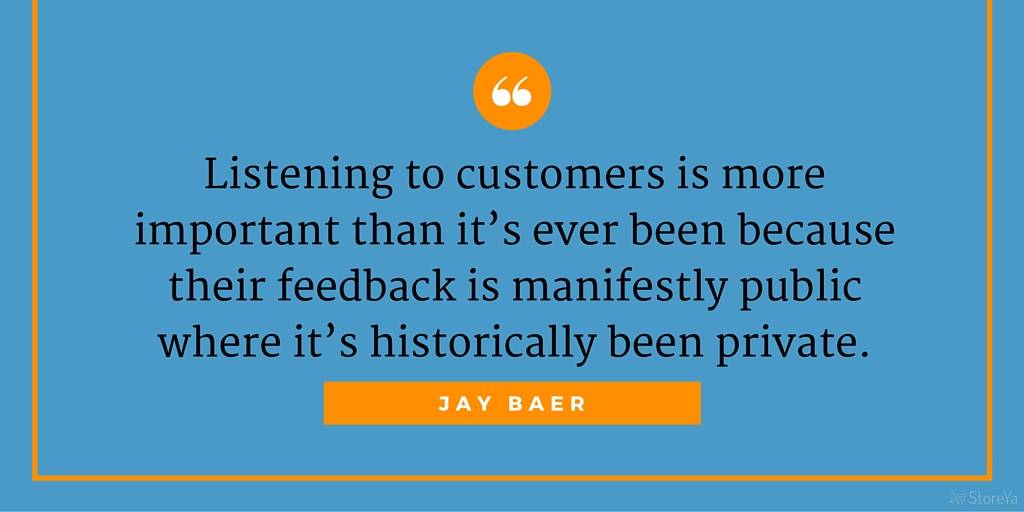
2. Define your goals
All your influencer marketing efforts should revolve around your goals.
Obviously, you’re working with influencer marketing and marketing in general because you’re hoping to achieve something with it. Most often, that ”something” is to sell more, but in influencer marketing, it doesn’t have to be. Even though for all brands, the end goal is always to sell more.
A common term in a marketing context is KPI- Key Performance Index.
If you are new to that term, it means highly specific goals that help you quickly distinguish whether or not you’ve achieved them once the campaign is over
If you were to look at the general goal of an influencer marketing campaign, it might be to increase interest in your brand and drive sales. But this metric is difficult to measure and know if you’ve achieved, if not impossible.
By setting goals in your influencer marketing strategy, you know exactly what you’re working to achieve, and thus are able to examine whether or not you’ve reached your goals.
While many people neglect to create an influencer marketing strategy, the fact is that creating one can, and probably will save you a lot of time since, instead of trying to measure the results of your influencer marketing campaigns without knowing what to look for, it is much easier to measure results when you know what your goal with the campaign was. Because when the campaign ends, you can just look at the results generated and see if they lived up to your expectations and goals.
KPIs, as opposed to broad goals, gives you much clearer information about whether or not you’ve reached your goal. Obviously, if your goal is to sell 10 products as a result of an influencer marketing campaign, but only sold 1, that campaign might be classified as a fail. But unless you set goals for your influencer marketing strategy, it will be hard to know what really classified as a successful campaign, and you might, therefore never know what classifies as a successful influencer marketing campaign.
KPIs will instead give you highly specific goals such as:
- Sell 10 products
- Get 100 newsletter sign-ups
- Increase website traffic by 20%
- Increase social followers with 500
Having short-term, long-term, broad, and specific goals is a good idea as the broad goal will work as a clear direction of where you are heading, and the KPIs will let you know once (and whether) you get there, and thus have run an influencer marketing campaign which was actually successful.
The best part is that influencer marketing has proven to be able to help brands achieve results within a ton of different marketing metrics, not just sales as many marketers tend to believe.
In fact, almost no matter what marketing goals you have, you can work towards it by leveraging influencer marketing.
Before you dig into your influencer marketing campaign, it is important that your goals have been clearly defined in your influencer marketing strategy.
Ideally, you want to have one big, main goal, and then a few sub-goals. The reason for this is that normally, with marketing efforts, you’re not just generating results for one metric but in a number of them.
For example, if you’re running an influencer campaign with the hopes of increasing sales, at the same time, as a result of the exposure you’re getting, you’re also gaining increased brand awareness as well as an improved reputation.
3. Break down influencers in your niche
When you’ve defined and set goals for your influencer marketing strategy, you know what you are hoping to achieve from your influence marketing efforts.
Now, it is time to ensure that you actually reach these results, and here’s where it gets interesting.
The foundation for generating these results are the influencers you partner with. There are, of course, other factors that play a part in how well your influencer marketing campaigns perform, but the single most important factor is the influencers you partner with.
Before you can choose what influencers you are going to work with, it’s a good idea to break down the different types of influencers within your industry in segments. The best part is that you’ve already defined your target audience and their characteristics, and this will be an extreme help when choosing influencers to partner with, as you’ll better know who your target audience looks up to and follows.
It doesn’t take a genius to understand that if you partner with an influencer which is operating in the tennis niche and you are a brand in the football industry, you won’t reach your target audience, and thus won’t be able to achieve any results worthwhile.
Therefore, the first and most obvious thing you need to do when segmenting influencers is to identify influencers within your own niche.
Obviously, there won’t be one size fits all when it comes to influencers in your niche because different influencers will post different content, thus attracting different audiences.
Let’s take the fashion industry as an example.
When breaking down the different influencers within the fashion industry, these are just some of the many categories you can segment them into:
- Shoes
- Clothing
- Costumes
In turn, these can be divided into even more subcategories. And really, there is an endless amount of subcategories that you can choose from, so the better aware of your own brand you are, and the better you know the people you are trying to reach – the better results you’ll be able to generate.
Shoes
- Sneakers
- Running shoes
- Boots
- Leather only
Clothing
- Street style
- Formal
- Casual
- Latest trends
- Luxury
- Cheap fashion
The list goes on and on…
Obviously, the more targeted and specific you go, the better chance you’ll have of achieving great results because those you are reaching are more aligned with your business’s offerings.
Now, it is time for you to segment the different segments that the influencers in your niche are in.
On a macro, you have your industry, which might be fashion, tennis, football, automotive, cycling, etc. but you want to go much deeper than that, and sort influencers into different sub-categories. From here, you want to consider which segments are the most relevant to you.
Is it influencers who are in the bicycle industry, who are specializing in exercising cycling, or is it influencers in the cycling niche who are focusing on downhill, and so on.
The most important part when creating your influencer marketing strategy is that you know that there’s a difference between the influencers in your niche.
4. Identify the right influencers
Now that you’ve identified your goals, and understood that there’s a ton of different influencers that all vary based on the thing in your industry they’re focused on, it’s time to find them.
There are several ways you can identify influencers, but using directories is the quickest, most accurate, and least time-consuming methods of doing so. It is also the best for finding the most laser-targeted influencer that matches your needs and brand.
You can use Veloce Influencer directory to filter and search for influencers relevant to your brand, and seconds later get a list of recommended influencers in the search results.
You can either use the free directory or, if you don’t want to source the influencers yourself, you can request a list of tailored influencers.
With our list of tailored influencers, simply choose your preferred criteria and how many influencers you’d like, and you’ll get a full list of relevant influencers for your brand within 72 hours.
Generally, you’d have to carefully research the influencers you find to make sure they haven’t faked their influence, bought fake followers, have a low engagement, etc. but since all influencers in the directory are carefully handpicked by our devoted team, and we only accept influencers that meet these strict criteria, you don’t need to worry, since we’ve already done it for you.
Read our complete article for finding the perfect influencers to partner with.
There are many other ways you can go about finding suitable influencers, but you can read all about it in the article above.
5. Monitor your influencers
Of course, there is only so much that directories and search engines can do, and in order to make that final call, you need to choose the influencers who align with your core values.
All influencers you’ve found might be a perfect fit for your brand, but all influencers are not equal, so when making the final call, you also want to take things like “what language do they speak in?” “What core values do they have?”, “Is their personality a good fit for us?” and so on into account.
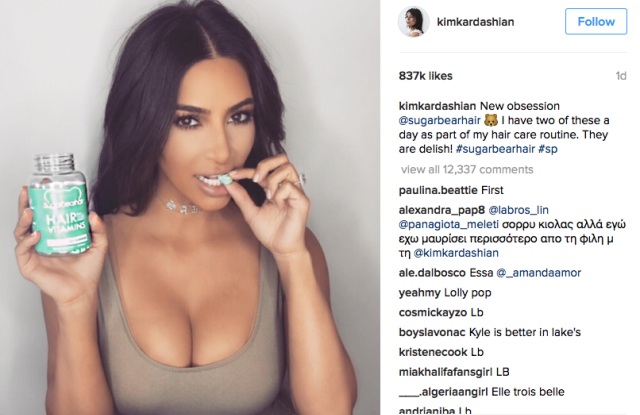
It might sound picky, but if you start working with an influencer who pulls in a completely opposite direction of where you want to go and presents your brand in a way that you don’t want to be portrayed, it can cause confusion, and it can actually damage your brand.
As a result, you’ll end up having to clean up what they influencer has done instead of enjoying the fruit of you and your influencer’s partnership and marketing campaign.
It’s crucial that you invest a lot of effort into this part of the influencer marketing strategy, considering that it is the single most important factor for successful influencer marketing campaigns.
Eventually, you’ll have to make a decision of which influencers to partner with and which not to partner with, and when it comes to making the final call, do what feels right, and partner with the influencers who you feel align and resonate with your brand.
6.Develop a content strategy
Influencer marketing is driven by content.
Obviously, in order to run an influencer marketing campaign, the influencer needs to share content with which they’re going to reach their target audience and drive marketing results.
While the influencers you partner with is the single most important part of influencer marketing, the content they share is also extremely important.
This is why, in your influencer marketing strategy, you want to put some thought into the content you’re going to use and have the influencer distribute on the platform they’re active on.
There’s a misconception among some brands that the way you drive great marketing results is if they create the piece of content and if they write the caption, etc., which the influencer is going to create.
The only problem is that it’s not. In fact, doing so is a surefire way to run an influencer marketing campaign which fails.

Remember that people follow influencers because they look up to them and turn to them for advice. But at the same time, they are loyal to the influencer because they feel like they’ve gotten to know them and their personality.
But what do you think will happen if you as a brand comes and makes the content that the influencer is going to share, for them?
I’ll tell you what will happen.
The influencer will share content that comes off as promotive and inauthentic because the followers of the influencer will be able to instantly tell that the post hasn’t been created nor written by the influencer.
For a successful influencer marketing campaign, authenticity is everything. If the influencer campaign comes off as inauthentic, people will look the other way, and they’ll lose trust in the influencer. If people don’t trust the message the influencer shares, it won’t generate any results worthwhile.
As a brand, you need to give the influencer creative freedom when it comes to content creation, and this is actually a great thing, because it means that you don’t have to spend time and effort creating content, while, at the same time, having the influencer share authentic posts which their audience resonates with and actually carefully consumes. This means better marketing results for you.
Who do you think knows the audience of the influencer best, the influencer or the brand? The influencer of course!
The influencer has spent years building their audience and engaging with its followers, and so they know exactly what their audience resonates with, what they don’t resonate with, what they find appealing, and what they don’t.
The way you drive great marketing results from an influencer campaign is having the influencer share content that does just that, and trust me, that type of content can only be created by the influencers themselves.
In the influencer marketing strategy, what you want to do is outline the type of content that you want the influencer to create.
As a brand, you want to give the influencers creative freedom, but you always want to review the content or create the content together with the influencer. What this does is ensure that the content they create not only resonates with their audience but also aligns with your brand and values.
By setting clear frames of how you imagine the content to be, the influencer will be able to create the type of content you want, but do it with their very own twist so that it comes off as authentic and is listened to.
7. Nurture relationships before you reach out
We’ve talked about this subject before, but as there are still people who aren’t following this principle, it simply cannot be discussed or emphasized enough.
As a part of your influencer marketing strategy, you need to have a plan for how you’re going to partner with the influencer.
While it is easy to believe that once you’ve found a suitable influencer for your brand, you’re good to go, but that is far from the truth.
The reality is that should look at building relationships with influencers in your industry long before you actually need them.
Influencer marketing has surpassed the state of “outreach, payment, and post”, and become something where marketers and influencers connect and build long-lasting relationships.
Why?
Because both marketers and influencers have realized that it is far more rewarding to build a relationship than to use an influencer once, then hop to the next one, which, surprisingly, many brands still do.
When you build relationships with the influencer long before you actually need them, they’ll be more positive in helping your brand grow, and to help you generate the best results once you need them.
Firstly, most influencers, especially the major ones, receive numerous partnership requests from brands every single day, and the fact is that they can only promote so many at a time.
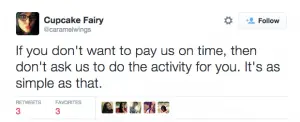
Obviously, if an influencer promotes two supplement companies which are competitors at the same time, the influencer’s words will become less trusted and authentic.
What’s more, if all the influencer does is promote brand after brand, they’ll eventually be seen as a sell-out, thus resulting in decreased trust.
With all of this in mind, influencers are highly selective with the brands they partner with, and so, many times, if you reach out to an influencer with the very same generic, canned message that you send to everyone, which proves that you haven’t put any thought or effort into it, they most likely won’t respond. This also depends on the fact that influencers are busy people. They don’t have time to respond to every single partnership request they receive from brands.
Where am I going with this?
Well, firstly with your influencer marketing strategy, you need to write a message with which you’re going to reach out to influencers with. This message is just going to be an outline, as each message you send to influencers needs to be tailored to them. If it’s not, the chances of them responding is minimal.
What’s more, as part of your influencer marketing strategy, you need to add engage with influencers.
Make it a habit to engage with influencers in your industry long before you might need to partner with them, and focus on bringing them as much value as you can. Engage with their posts, leave them comments, compliment their work, and support them in every way you can.
As you do this, you begin building your relationship with them and bringing them value.
This means that when you finally need their help, you are no stranger to them, and your outreach doesn’t become a cold-outreach which probably will end up in their trash. What’s more, since you have brought them so much value, it will be reciprocal, and they’ll feel guilty to repay you the favor.
Plus, when you’ve built a relationship with them, they’ll feel obligated to say yes when you ask them for a partnership.
Think about it, who are you most likely to say yes to, your best friend asking you for a favor or a stranger who walks up to you?
The answer is quite obvious.
A mistake that some marketers still seem to commit is to expect the influencer to do all the hard work, and them paying the influencer is enough in return.
An influencer partnership should be mutual in terms of benefiting from it, and oftentimes, it has to do with respect. Treat your influencer with respect, encourage them, thank them, and they’ll be much more likely in doing everything they can to help you as much as possible.
7. Measure results
The campaign has ended, you think it went well.
Or did it?
Since you haven’t measured any results, you won’t be able to know.
The fact of the matter is that 53% of brands have difficulties measuring influencer marketing campaigns.
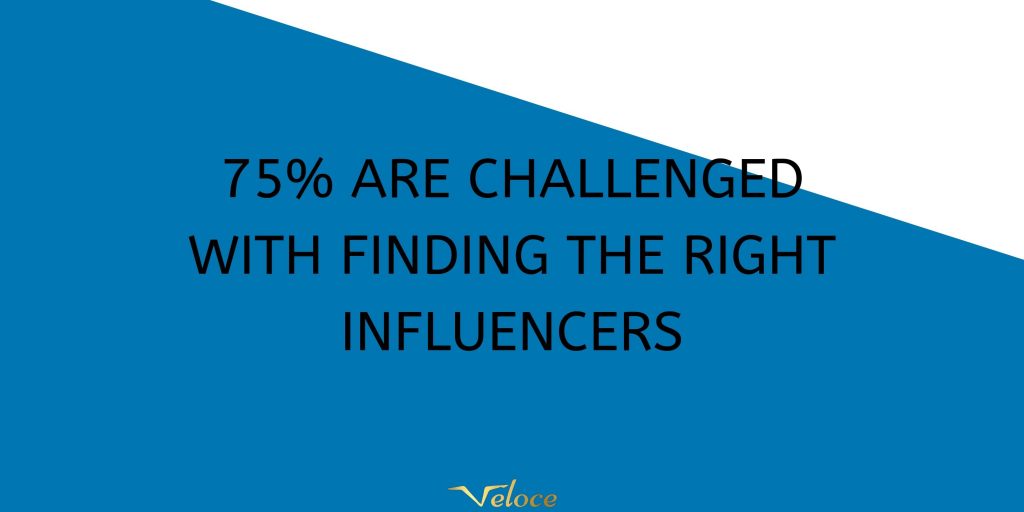
That’s a huge number considering the fact that result measuring is critical for any type of marketing. If you aren’t measuring, you might end up throwing money in the trash, nor will you have the opportunity to improve – because how can you improve if you don’t know if the marketing efforts you’re making are beneficial or only costing you money?
The only way to improve is to know what you’re doing wrong.
If you think that everything you do is completely perfect, you’ll go around thinking that you don’t need to do anything.
This is the reason why measuring results is a crucial part of all successful influencer marketing campaigns and should be a part of your influencer marketing strategy.
Many marketers neglect to measure results from their influencer marketing results for many reasons. Some just don’t know how to do it, others think it takes too much time, and others don’t believe it is important.
So how can you measure results?
A common mistake when it comes to measuring results from influencer marketing (or any other marketing effort for that matter) is collecting too much data. If you go and pick up shards from 10 plates of different kinds, you’ll never be able to glue the pieces back together into a complete plate.
The same goes for influencer marketing.
Focus on the things that matter instead of collecting all data you can come across because they’ll only cause confusion. But thankfully, you set your goals and KPIs before the campaign started, and here’s where the fact that you’ve set marketing objectives come in handy.
Since you’ve already set objectives and goals of your influencer marketing campaigns in your influencer marketing strategy, you know exactly what you’re going to look at.
All you need to do is evaluate whether or not the campaign you’ve run has achieved the results you set.
Did I meet the goals I set?
Did I set surrealistic goals?

